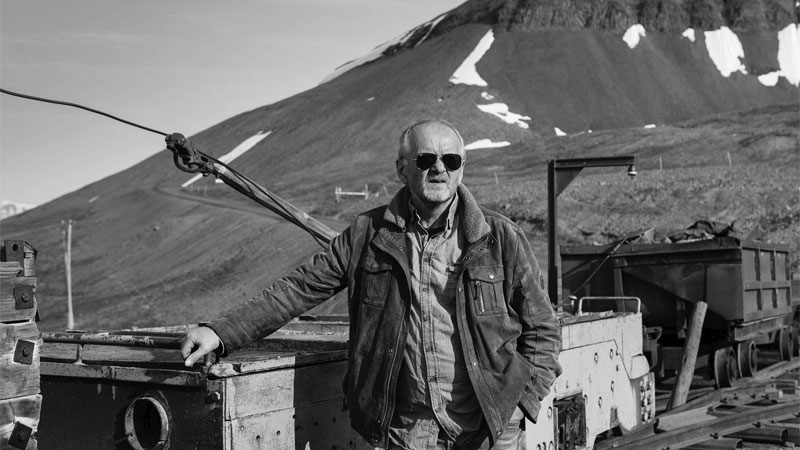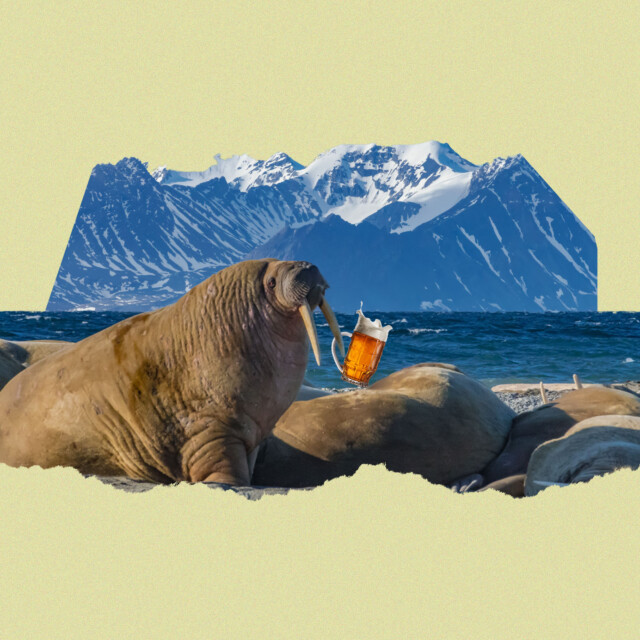Norwegians love all kinds of beer but they’re especially fond of local sips, made at the brewery in their town or region. So when Robert Johansen first moved to Svalbard — the remote, sparsely populated Norwegian-governed archipelago not far from the North Pole — to work in the coal mines in the early 1980s, he was somewhat shocked to learn no one was brewing there. “We were drinking a lot of beer then,” he says with a laugh.
Johansen’s career took him elsewhere for several years. But when he eventually moved back to the rugged Arctic islands in the early 2000s, he decided to figure out why. What he learned also surprised him: A 1920s law still on the books prohibited the production of alcohol on Svalbard.
At one time, the law made sense. Longyearbyen, the northernmost town in the world, was initially a company town, owned and managed by the Norwegian mining firm Store Norske. The mine bosses didn’t want workers getting too rowdy. And with polar bears lurking around every corner (to this day, there are more polar bears than people living in the region), the rule was also a safety measure. “They were really critical about who they hired up here,” says Haakon Unhammer Kvaale, the historian and archivist at the Svalbard Museum. “If someone came up and had an alcohol problem, they’d be sent home and they wouldn’t be rehired for another season.”
As for why the law was still in effect in the modern era, that was anybody’s guess. It didn’t make sense to Johansen, who had become a passionate homebrewer, so he undertook the long, involved process of getting the law changed. After five and a half years of petitioning the Norwegian government — a campaign that included calling every month — he succeeded. In August 2015, he opened Svalbard Brewery (or bryggeri in Norwegian) and he’s been brewing the world’s northernmost beer ever since. “To be a real city in Europe, you must have a soccer team and a brewery,” says Johansen, who is 64. “So, of course, people are really proud of the brewery. They have something they can call their own.”
Svalbard’s Alcohol Traditions
Today, Svalbard Brewery makes an array of classic styles — from a well-balanced wheat beer to a hoppy IPA — as well as a few rotating beers inspired by the unique local geography. The brewery barrel-aged its Gruve 3 Stiger Imperial Stout in a coal mine to pay homage to the region’s deep mining roots, for instance, and its Juleøl semi-dark ale celebrates the longstanding Norwegian tradition of brewing a special beer at Christmas.
The beers are on tap at most of Longyearbyen’s bars, pubs, and eateries, including Huset, a fine-dining restaurant that offers a beer pairing, in addition to the more standard wine pairing option, with its upscale six-course tasting menu. Huset uses hyper-local Arctic ingredients like reindeer, seal, and seaweed, so it’s only natural to serve Svalbard-made beer, too, says Frederik Ojaste, Huset’s sous chef. “It’s an amazing complement to everything on the menu and it’s also really amazing for us up here to have our own beer — it’s a little local patriotism in a way,” he says. “It’s just nice for us to be able to serve local products from the wild but also our local beer.”

Svalbard Brewery’s beers are also available at Nordpolet, a.k.a. the North Pole, which is the only liquor store in Longyearbyen. Here, another of Svalbard’s archaic rules from the mining days is still in full effect. The governor of Svalbard issues of-age residents an official alcohol card, or alkoholkort, which they must present at the liquor store for a stamp when they make purchases. The card helps keep tabs on Svalbard’s alcohol quota, which limits residents to 24 cans of beer, two bottles of spirits (or four bottles of fortified wine, plus an additional half-bottle), and unlimited wine each month. The quota only applies at the liquor store; residents can drink as much as they like at bars and restaurants. And instead of viewing the quota as an annoyance, most locals see it as a quirky embodiment of the town’s past. (It also gets them local discounts, which helps.)
“For many, it’s not really an issue in terms of limiting their consumption of alcohol because it’s quite liberal in that way, but it’s very much a local pride subject in that it’s still a living connection to the mining history,” says Håkon Daae Brensholm, the sales and marketing coordinator for Svalbard’s tourism office. “It’s a very ingrained part of the local culture. In the same way that a lot of traditions aren’t necessarily logical, it’s a very emotional connection.”
Sustainability at 78 Degrees North Latitude
But brewing tasty beer at the top of the world isn’t easy. Almost nothing grows at 78 degrees north latitude, a part of the world that experiences 24-hour darkness (and 24-hour daylight) for several months of the year, so all goods and supplies must be shipped or flown in. That also makes it challenging to get replacement parts or specialized tools if any of the brewery’s equipment goes on the fritz.
And what to do about all the spent grain that’s left over from the brewing process? Johansen initially tried to find someone who would take it — the local bakery, as well as a stable with a few horses — but they just couldn’t handle the amount of spent grain the brewery produced. Since the archipelago is covered in permafrost, letting it decompose naturally also wasn’t an option.
After paying a fortune to ship it to mainland Norway for disposal, Johansen realized he could convert the waste into energy. “Today, we are drying the mush completely and burning it,” says Siv Eikeland, a jill-of-all-trades — or, as they say in Norway, a “potato” — at the brewery. “We are self-serve with heat and warm water in this building and, if we have overproduction, we can also send it out to other places in Longyearbyen as well.”
That sustainable process also inspired Johansen’s next big project: a greenhouse. Within the next few years, he plans to expand by building a new, larger brewing facility with an adjacent greenhouse space for vertical farming. Because of the long distance from mainland Norway and other countries, as well as the logistics of shipping fresh produce to the Arctic, Johansen says roughly 40 percent of all fruits and vegetables sent to Svalbard end up going bad before they even arrive. “We have the energy for free, so we are thinking about how else we can use it,” he says. “Instead of using it in houses in town, we are planning to use it for growing vegetables.”
The new multipurpose location will also help Johansen grow the brewery itself. He’s in the process of expanding distribution throughout Europe, starting in Hamburg, Germany. Svalbard Brewery is also partnering with longstanding Norwegian travel and transportation company Hurtigruten, which plans to serve the brewery’s beers on many of its cruise ships around the world. Though he’s still finalizing the details, Johansen says a distillery is also in the works.
“Svalbard has not exported anything other than coal in many years,” he says. “We are the first to make something new — really new. We’re trying to build something here.”
